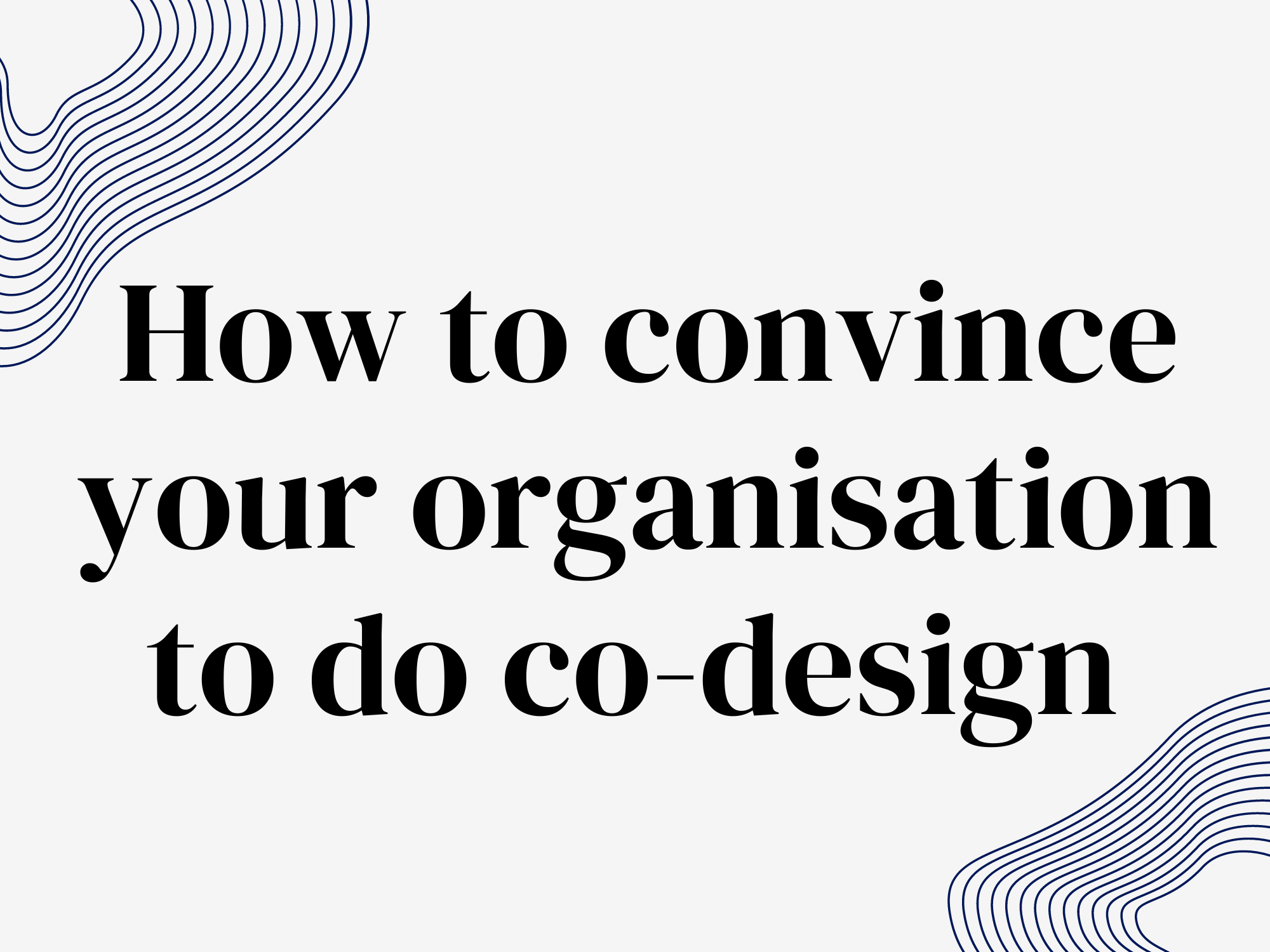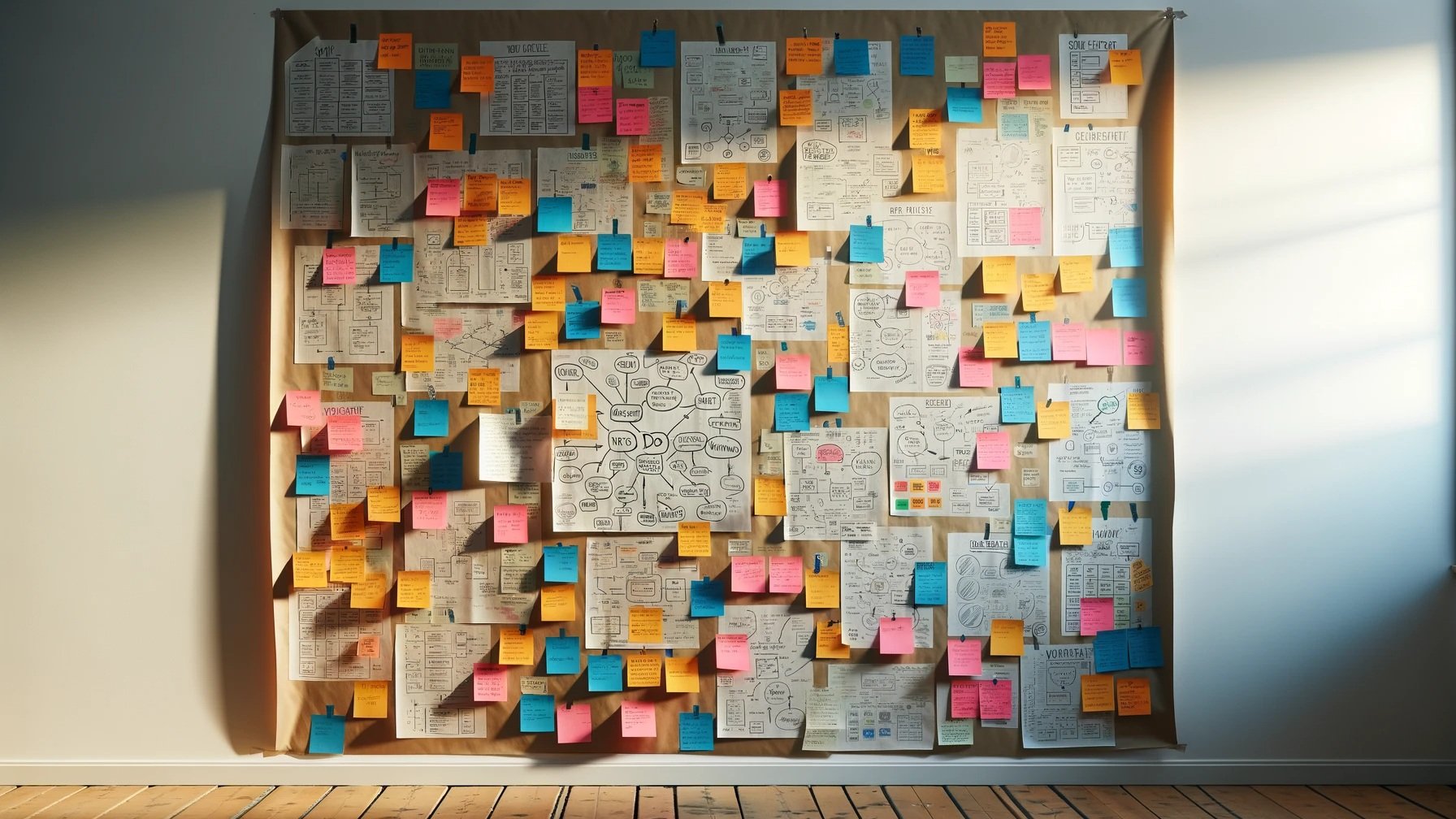How to convince your organisation that co-design is worth it
Not everyone is 'on board' with co-design –some leaders need to be convinced.
Co-design has been gaining traction as a valuable method for designing programs and services in the health and community services sectors, yet many organisations and leaders still approach it with caution.
At the heart of this caution lies concerns about the initial costs, the perceived complexity, and the potential risks associated with a co-design approach.
However, holding this perspective overlooks the potential that a co-design process can offer.
The key to changing the minds of leaders and organisations lies not in confronting these concerns head-on but in painting a picture of the long-term benefits that co-design can bring.
It's about shifting the focus from what is given up – things like money or control, to what can be gained – fit-for-purpose programs and services that meet the needs of consumers.
Advocating for co-designing programs and services in your organisation
When it comes to gaining buy-in for co-design from your manager or organisational leaders, it helps to be organised and strategic.
The items below are a series of 'moves' that you can explore to present a compelling case for co-design. Generally speaking, you'd be aiming to capture the majority of the information below in a business case, but whether you are formally documenting a business case or not, you'll need to be able to talk about these points in conversations with leaders – so, best to be prepared upfront.
Identify the specific concerns your leaders have about co-design
To effectively advocate for co-design, it's vital to first grasp the attitudes within your organisation's leadership team regarding this approach. Investigate their concerns. They might range from budget constraints to a reluctance to share power or decision-making with others.
Additionally, take the time to understand the decision-making history and previous approaches to projects in your organisation. This understanding will not only inform your strategy but also demonstrate empathy and thoughtful consideration of the leadership's perspective.
Document the human benefits
In documenting the human benefits of co-design, focus on the enhanced satisfaction and engagement that comes from involving users and stakeholders in the design process. Explain how inclusion improves morale and ownership and leads to services that are tailored to the needs of users.
Highlight the potential for improved outcomes, such as increased uptake of services, higher satisfaction rates, and positive ripple effects on community perception and trust. These human-centric advantages underscore the value of co-design as a tool for creating services that resonate with and empower the community.
Document the medium to long term cost benefits
To effectively demonstrate the cost benefits of co-design in the medium to long term, it's important to compile and present data showcasing potential savings over time. This data should highlight how involving users early on can reduce the need for expensive revisions and result in more sustainable services that cater to user needs from the outset.
It's crucial to emphasise that investing in co-design is a way to avoid future expenses associated with retrofitting services or addressing issues that could have been identified and resolved during the design phase. This approach will help leaders view co-design as a strategic investment in the organisation's future efficiency and effectiveness rather than an expense.
Pitch why co-design should be embraced over traditional approaches
Educating someone about co-design involves crafting a concise yet comprehensive explainer that demystifies the process and its benefits. It should include a straightforward definition, the steps involved, and how it contrasts with traditional design approaches.
Supplement your pitch with select case studies showcasing successful co-design applications, especially those within your industry. These case studies should be chosen for their relevance and the clarity with which they demonstrate the tangible benefits of co-design. Presenting this information will help demonstrate co-design’s practicality and effectiveness, making it more approachable and understandable for the leadership.
Through all this, know who you are presenting to! Co-design language can be pretentious, so if you have leaders with a more traditional mindset, it may be a good idea to simplify the wording to be brief and practical.
Align with organisational goals
Aligning co-design with your organisational goals means demonstrating its relevance to the overarching strategic objectives. Detail how co-design methods can directly contribute to achieving key outcomes, such as improving service delivery or enhancing customer satisfaction. Relate the co-design principles to the company’s core values, such as innovation, inclusivity, or community focus, to show a natural alignment.
This approach ensures that the advocacy for co-design is not seen as a departure from current objectives but to more effectively realise them, resonating with the established mission and vision of the organisation.
Propose a pilot
Proposing a pilot project is a strategic move to introduce co-design within a controlled, low-risk environment.
Choose a project that stands to benefit significantly from a co-design approach and outline a clear, actionable plan for implementation. This plan should include defined timelines, expected outcomes, and milestones that will allow leadership to see the potential of co-design in action without overcommitting resources.
Demonstrate commitment
To demonstrate commitment to the co-design initiative, it's crucial to show a personal willingness to lead – perhaps by overseeing the pilot project. Offer to take charge of the organisation, coordination, and reporting of the project's progress.
This not only illustrates your confidence in co-design’s effectiveness but also reassures leadership of your dedication to managing the process and ensuring its success. It tempers the perceived risk and positions you as an advocate ready to guide the organisation through this innovative journey.
Follow up with persistence
Following up with persistence is about maintaining momentum and keeping the co-design initiative at the forefront of organisational strategy discussions. Establish a schedule for regular updates on the status of the co-design proposal, ensuring it remains a point of consideration in decision-making forums.
Be ready to provide additional information or refine the proposal to address evolving concerns or insights. This consistent engagement demonstrates a commitment to the co-design process and underscores its importance, keeping the dialogue open and moving towards a positive resolution.
Next steps in your co-design journey
While co-design is making significant inroads in the health and community services sectors, not everyone is ready to jump on board. Convincing leaders of its value often requires a well-prepared advocate who can clearly articulate the human, economic, and strategic benefits of this approach. If you are trying to champion co-design within your organisation, remember that success lies in preparation, alignment with organisational goals, and persistent follow-through.
This co-design checklist provides a roadmap for preparing your case and starting the conversation. But the journey doesn't end there. To continue building your knowledge and find resources to support your advocacy for co-design, we invite you to visit our co-design homepage. There, you'll find further information, success stories, and strategies to help you turn scepticism into support and caution into commitment.
Take the next step in transforming your organisation's approach to design and service delivery. Visit our Co-Design homepage now and start the conversation that could lead to more innovative, inclusive, and successful outcomes for everyone involved.



